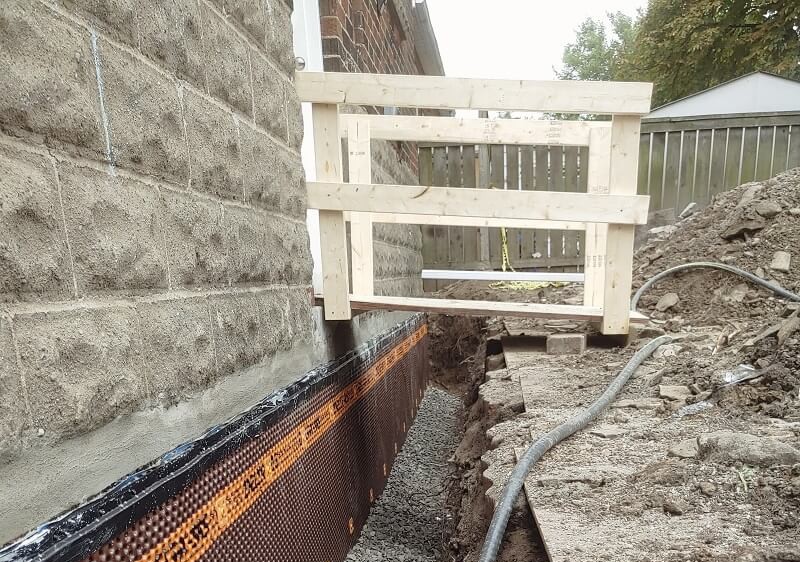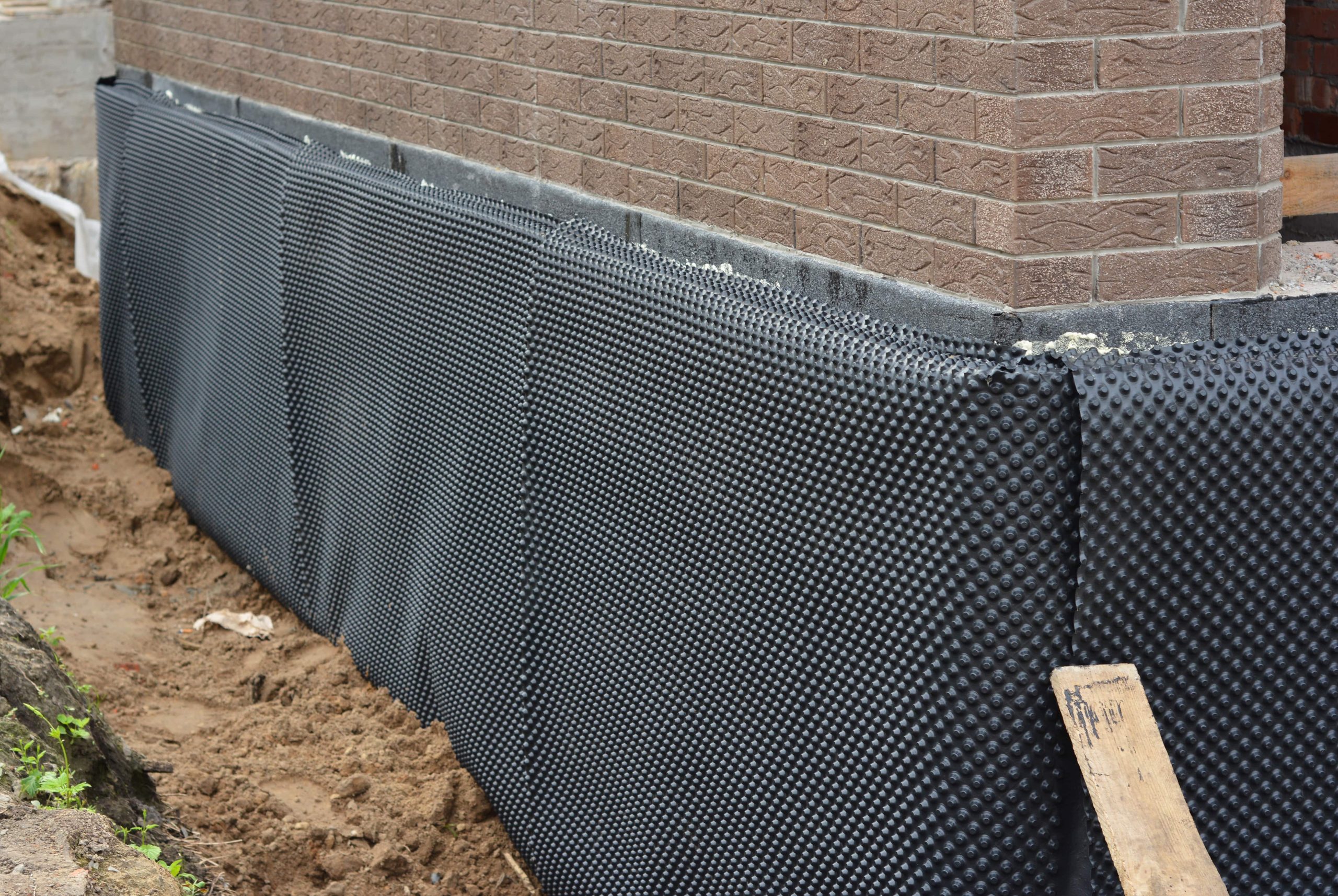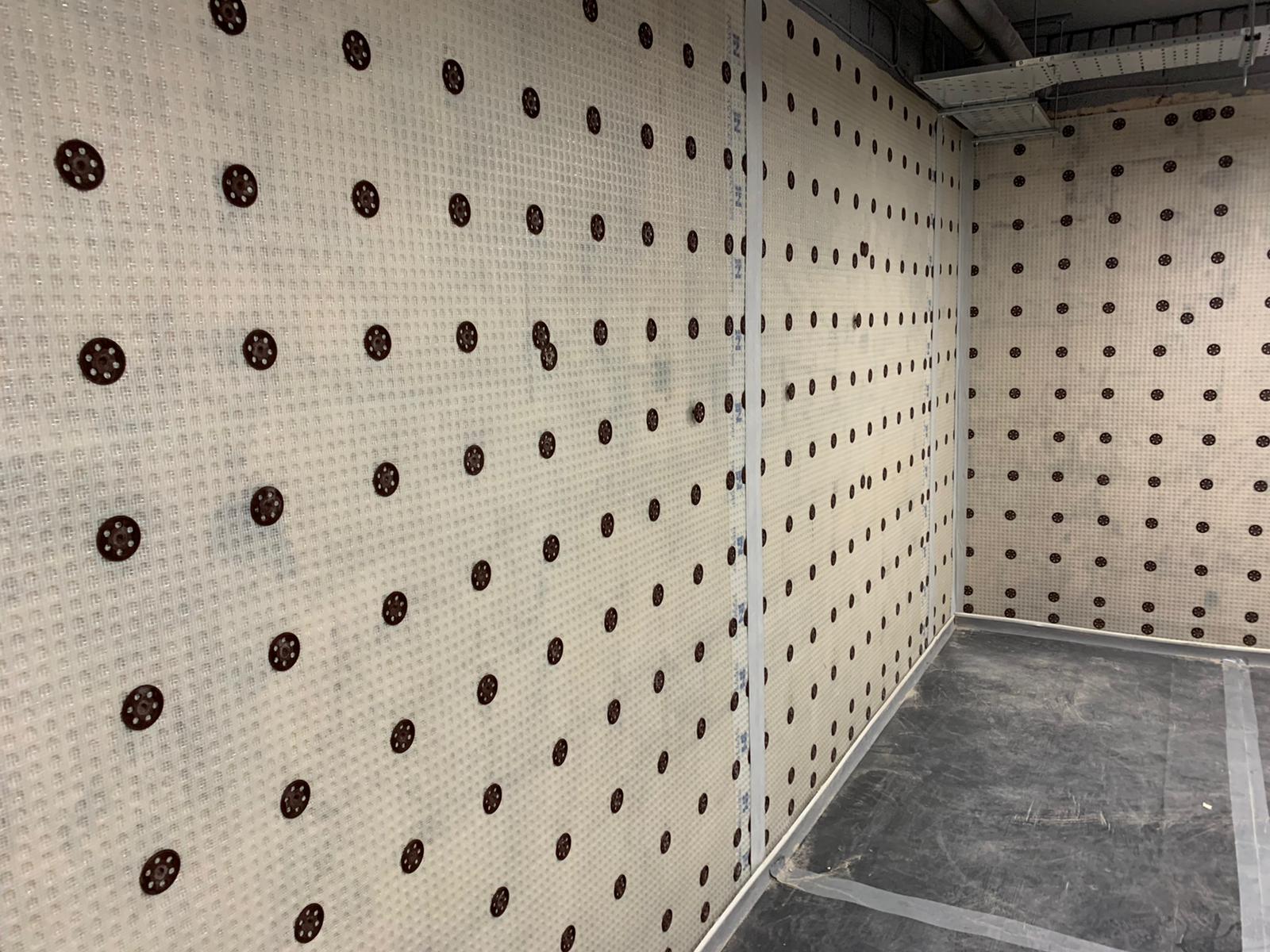How to tell condensation, rising, and penetrating damp with help from damp proofing newcastle
How to tell condensation, rising, and penetrating damp with help from damp proofing newcastle
Blog Article
Exploring the Different Techniques and Solutions for Effective Damp Proofing
Wetness in buildings presents substantial obstacles to both structural stability and interior air quality. Different methods and services have emerged to battle this prevalent issue. From conventional damp-proof membranes to ingenious chemical therapies, each technique uses one-of-a-kind benefits. Recognizing these choices is necessary for effective wetness control. Selecting the ideal option depends on certain building problems and needs, triggering more expedition right into the most efficient wet proofing techniques available.
Understanding the Root Causes Of Moisture
Although moisture can occur from various sources, comprehending these reasons is essential for reliable removal. Generally, wetness stems from three key sources: climbing moist, permeating damp, and condensation. Climbing wet occurs when groundwater takes a trip upwards via permeable products, such as block or stone, commonly because of an absence of an efficient obstacle (damp removal newcastle). Permeating damp is normally triggered by exterior factors, consisting of roof leakages, faulty rain gutters, or harmed walls, enabling water to penetrate a building. Condensation, on the other hand, arises from excess moisture airborne, usually intensified by inadequate ventilation and temperature differences, leading to water beads basing on surface areas. Determining these underlying issues is vital, as each sort of moisture requires a customized method for removal. Correct assessment assists in identifying the most efficient options, inevitably safeguarding the structural integrity of a building and enhancing indoor air high quality
Standard Damp-Proof Membranes

Chemical Damp-Proofing Solutions
Chemical damp-proofing remedies supply a cutting-edge approach to avoid wetness invasion in buildings. These techniques commonly include the application of liquid chemicals that penetrate stonework and form an obstacle against rising wet. Typically made use of chemicals include silanes, siloxanes, and various other water-repellent representatives that respond with surface materials to produce a hydrophobic layer.The application procedure usually calls for exploration openings right into the wall surfaces, injecting the chemical service, and allowing it to heal. This method is especially useful for older frameworks where conventional damp-proof membrane layers might be not practical. Chemical damp-proofing can be less disruptive and more affordable than substantial restoration projects.While efficient, these options depend on correct application and environmental problems for peak performance. damp specialist newcastle. Regular maintenance and tracking are vital to assure the durability of the damp-proofing therapy. On the whole, chemical damp-proofing stands for a functional alternative for guarding structures against moisture-related damage
Cavity Wall Surface Building And Construction Strategies
Dental caries wall building methods provide various advantages, particularly in wetness control and energy efficiency. By including an air space between two layers of stonework, these wall surfaces effectively minimize water ingress while enhancing insulation. This mix not only shields structures from wetness but additionally adds to decreased power consumption.
Advantages of Tooth Cavity Walls
When considering effective wet proofing methods, the benefits of cavity wall surfaces stand apart plainly. Tooth cavity walls contain two separate layers, producing an air space that successfully reduces wetness infiltration. This design decreases the risk of wetness, as the external wall works as a barrier against rainfall and water ingress. Additionally, dental caries wall surfaces enhance thermal insulation, which adds to power performance by decreasing warmth loss. They also provide audio insulation, aiding to create a quieter indoor atmosphere. The air void enables for air flow, which assists in moisture control and decreases the probability of mold and mildew development. These advantages not just improve the general comfort of a building but also add to its longevity and structural stability.
Moisture Control Approaches
Efficient moisture control strategies are crucial in cavity wall surface building to guarantee long-lasting protection versus dampness. One main method includes the unification of weep holes, which assist in water drainage from the tooth cavity, preventing build-up. Additionally, making use of breathable membrane layers can help handle moisture levels while permitting trapped vapor to leave. Appropriate positioning of insulation is also critical, as it needs to not obstruct drain courses. Moreover, making sure that the external leaves of the tooth cavity wall are created with waterproof materials improves general durability. Regular upkeep checks are important to identify any kind of obstructions or damages early, safeguarding the structure's stability. Inevitably, a combination of these techniques creates a robust protection versus moisture invasion in cavity wall surfaces.
Insulation and Energy Effectiveness
Insulation plays an important duty in boosting power performance within dental caries wall surface building and construction. By including protecting products, these wall surfaces produce a thermal barrier that reduces heat loss and decreases energy consumption. Reliable insulation not just assists keep a stable indoor temperature level however also alleviates the threat of wetness, as it protects against condensation within the wall tooth cavity. Various techniques, such as the usage of inflexible foam boards or mineral woollen, can be used to accomplish suitable insulation performance. Additionally, proper installment is vital to assure that spaces and gaps are lessened, which can otherwise endanger energy performance. Inevitably, a well-insulated tooth cavity wall adds substantially to general sustainability and lowers heating & cooling expenses for home owners.
Exterior Damp Proofing Techniques
External moist proofing methods are important for safeguarding frameworks from moisture infiltration. 2 reliable methods include the application of water resistant membranes and the installment of French drains. These remedies assist minimize water build-up and maintain the stability of buildings.
Waterproof Membrane Application
While numerous methods exist for protecting against moisture access, the application of water-proof membranes continues to be an extremely efficient exterior damp proofing method. These membrane layers are normally made from materials such as polyethylene, rubber, or customized asphalt, offering a durable barrier versus water penetration. The installation procedure entails applying the membrane layer to the outside surface areas of walls or foundations, guaranteeing full protection to prevent leakages. Appropriate attachment and securing at joints are essential to making the most of performance. Water resistant membrane layers can be used in various types, including liquid coatings and sheet membranes, enabling for adaptability based on the specific demands of the structure. This technique not just secures structures from wetness yet also enhances their durability and architectural integrity.
French Drain Installment
One reliable technique for taking care of groundwater and preventing moisture buildup around a structure's foundation is the installation of a French drainpipe. This drain system includes a trench loaded with crushed rock and a perforated pipeline that redirects surface water far from the structure. Proper installation calls for cautious planning, making certain that the drain inclines away from the structure read more to promote excellent water circulation. Additionally, the place of the drainpipe is vital; it ought to be positioned in areas susceptible to pooling or excess wetness. Regular maintenance, consisting of cleaning particles from the gravel and ensuring the pipeline remains unblocked, is necessary for long-term effectiveness. Inevitably, a well-installed French drain can greatly minimize the threat of water-related problems in structures and basements.
Interior Waterproofing Techniques
Interior waterproofing methods are vital for securing a building's interior from wetness seepage and potential water damage. These methods generally include the application of customized materials and methods made to create a wetness obstacle within the framework. One typical approach is the use of water-proof coatings or sealants on walls and floorings, which prevent moisture from permeating surfaces.Additionally, mounting indoor drainage systems, such as sump pumps, can properly handle water accumulation in basements and crawl spaces. One more approach entails using vapor obstacles, which are installed to inhibit wetness motion from the ground right into living spaces.Moreover, addressing any kind of cracks or gaps in walls or structures with proper sealers ensures a thorough defense versus water breach. By implementing these interior waterproofing techniques, home proprietors can considerably reduce the risk of mold and mildew development, architectural damage, and other moisture-related issues. Correct implementation of these methods is vital for long-lasting protection and structure integrity.
Normal Upkeep and Evaluation Practices
Regular upkeep and inspection practices are crucial for guaranteeing the lasting efficiency of damp proofing remedies in any type of building. Regular checks allow homeowner to recognize very early signs of dampness invasion, such as peeling paint, mold and mildew growth, and musty smells. These signs can signal underlying issues that call for instant attention.Inspections should be performed at the very least annually, concentrating on vulnerable locations like cellars, creep spaces, and outside wall surfaces. During these analyses, homeowner ought to check out sealants, water drainage systems, and air flow to verify they operate correctly.Additionally, maintaining seamless gutters and downspouts is crucial, as clogged up systems can result in water buildup near the foundation. Implementing a normal maintenance routine, in addition to timely repair work, can considerably extend the life expectancy of moist proofing measures and secure the architectural honesty of the building. Proactive steps eventually add to the total health and wellness of the living setting.
Regularly Asked Questions
The Length Of Time Does Damp Proofing Usually Last?
The duration of moist proofing efficiency differs, normally lasting between 20 to 50 years. Elements such as application high quality, environmental conditions, and maintenance practices considerably influence the durability of the moist proofing therapy.

Can I Damp Proof My Home Myself?
The specific contemplated the feasibility of DIY damp proofing. With proper study and the appropriate materials, it is possible. Nevertheless, they additionally recognized the importance of professional guidance to ensure durable effectiveness and stop future problems.
What Are the Indications of Inefficient Damp Proofing?
Indications of ineffective wet proofing consist of relentless stuffy smells, visible mold and mildew development, peeling paint, wet patches on wall surfaces, and timber decay - mould treatment newcastle. Homeowners need to address these concerns without delay to avoid further damages and health problems
Does Damp Proofing Affect Indoor Air High Quality?

Exactly How Much Does Specialist Damp Proofing Expense?
Professional moist proofing costs differ significantly, generally varying from $1,000 to $5,000 depending on the building's size, the extent of the moist concern, and chosen approaches. Each circumstance requires a customized evaluation for exact prices. Frequently, wetness originates from 3 key sources: rising moist, passing through wet, and condensation. When thinking about reliable wet proofing approaches, the advantages of tooth cavity wall surfaces stand out plainly. Exterior wet proofing approaches are vital for securing frameworks from dampness seepage. While numerous techniques exist for stopping wetness ingress, the application of water-proof membrane layers stays a very reliable external wet proofing method. Indicators of inadequate moist proofing include relentless stuffy odors, visible mold and mildew development, peeling paint, damp spots on wall surfaces, and timber degeneration.
Report this page